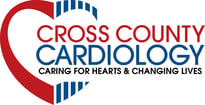Despite increasing popularity of electronic cigarettes (e-cigarettes), the long-term health effects of habitual e-cigarette use remain unclear.1 Many constituents of e-cigarette aerosols, including nicotine, carbonyl compounds, fine particulate matter, and metals, are associated with substantial toxicity.1 Inhalation of e-cigarette aerosols among young, healthy adults induces inflammation and oxidative stress.1 Two large cross-sectional studies reported no significant association between exclusive e-cigarette use and cardiovascular disease (CVD).2,3 However, longitudinal studies are essential to assess the association of e-cigarette use with incident CVD.
Data came from the PATH study (Population Assessment of Tobacco and Health), a nationally representative cohort study with 5 annual waves of self-reported data collected from 2013 to 2019.4 The initial sample included 32 320 non-institutionalized US adults aged 18 years or older with oversampling of tobacco users, young adults, and African American individuals. Excluded respondents included those lost to follow-up at wave 2 (5873), previously diagnosed with CVD (2172), or missing baseline exposure (55), baseline CVD (99), or wave 2 outcome data (94).
Participants were considered smokers if they smoked >100 cigarettes in their lifetime and reported current cigarette smoking; participants were considered e-cigarette users if they reported any current e-cigarette use. Participants were classified into nonuse (no current e-cigarette use or smoking), exclusive e-cigarette use, exclusive smoking, or dual use. Exposures were updated at each wave of follow-up.
Incident CVD was defined as any self-reported past 12-month diagnosis of myocardial infarction (MI) or bypass surgery, heart failure (HF), other heart condition, or stroke over waves 2 to 5, with a separate outcome only including MI, HF, and stroke. The validity and reliability of self-reported MI, HF, and stroke were supported previously within the PATH study sample.5
Cox regressions were used to model incident composite CVD outcomes as a function of a 4-category cigarette and e-cigarette use exposure measure. Respondents contributed a maximum of 4 years of follow-up time from baseline (wave 1) until a CVD diagnosis, loss to follow-up, or the end of follow-up (wave 5), whichever came first. Multiple imputation was used to account for missing covariate data and wave 2 longitudinal weights were incorporated to generate nationally representative estimates. The analytic code is available on request to reproduce the results.
Analyses were adjusted for baseline covariates potentially associated with tobacco use and CVD, including age (18–24, 25–34, 35–44, 45–54, 55–64, 65–74, 75+ years), sex, race and ethnicity (Hispanic, non-Hispanic Black, non-Hispanic White, non-Hispanic other), education (less than high school, high school/General Equivalency Development, some college, bachelor degree or above), body mass index, hypertension, high cholesterol, diabetes, and family history of MI. Analyses were also adjusted for ever use of marijuana, cigarette pack-years, and pack-years squared. Adjustment for time-varying current use of noncigarette combustible (hookah, pipe, cigar, cigarillo) and noncombustible (snus, other smokeless) tobacco were also included.
There were 24 027 eligible respondents (50% younger than 35 years, 51% women). Exclusive e-cigarette users and dual users, as compared with nonusers, were younger (62% and 54% younger than 35 years, respectively, versus 51%) and had accumulated more cigarette pack-years (11.0±46.7 and 15.7±32.2, respectively, versus 4.2±21.8). There were 1487 incident cases of any CVD and 519 cases of MI, HF, or stroke (Table). After adjusting for covariates, participants exclusively using e-cigarettes had risk of developing any CVD condition that did not differ from nonusers and higher, albeit nonsignificant, risk of the MI, HF, or stroke outcome (hazard ratio [HR], 1.00 [95% CI, 0.69–1.45] and HR, 1.35 [95% CI, 0.75–2.42], respectively). Compared with smoking, e-cigarette use was associated with 30% to 40% lower CVD risk, although this association was only significant for the any CVD outcome. Dual users had risk that did not differ from exclusive smokers for the any CVD and MI, HF, or stroke outcomes (HR, 1.01 [95% CI, 0.81–1.26] and HR, 0.94 [95% CI, 0.65–1.36], respectively).
HR indicates hazard ratio.
* Myocardial infarction or needed bypass surgery, heart failure, other heart condition, or stroke.
† Adjusted for age (18–24, 25–34, 35–44, 45–54, 55–64, 65–74, 75+ years).
‡ Adjusted for age (18–24, 25–34, 35–44, 45–54, 55–64, 65–74, 75+ years), sex (male or female), and race and ethnicity (Hispanic, non-Hispanic Black, non-Hispanic White, non-Hispanic other).
§ Adjusted for baseline age (18–24, 25–34, 35–44, 45–54, 55–64, 65–74, 75+ years), sex (male or female), race and ethnicity (Hispanic, non-Hispanic Black, non-Hispanic White, non-Hispanic other), education (less than high school, high school/General Equivalency Development, some college, bachelor degree or above), body mass index (continuous), cigarette smoking pack-years and its square (both continuous), ever used marijuana (yes or no), ever diagnosed with high blood pressure (yes or no), ever diagnosed with high cholesterol (yes or no), ever diagnosed with diabetes (yes or no), and ever had a close biological relative be diagnosed with a myocardial infarction or have bypass surgery (yes or no). Also adjusted for time-varying current use of combustible (cigars, cigarillos, pipes, or hookah) and noncombustible (snus or other smokeless tobacco) tobacco use.
We did not find a significant difference in the cardiovascular risk of exclusive e-cigarette use compared with nonuse of cigarettes and e-cigarettes, although analyses were limited by a small number of CVD events in e-cigarette users. Dual use of cigarettes and e-cigarettes was associated with a significantly increased risk of CVD compared with nonuse. The cardiovascular risk of dual use did not differ from the risk among those exclusively smoking cigarettes. Other recent cross-sectional analyses have also reported no significant association between e-cigarette use and CVD outcomes.2,3 Limitations of this study include use of self-reported, nonadjudicated outcomes that could result in misclassification, a short follow-up period given the progressive development of CVD, and a nonuse reference group that includes former cigarette users. Larger studies with more cardiovascular outcome events and longer follow-up are warranted. Our results suggest that combining smoking with e-cigarette use does not reduce CVD events and that quitting both products is required to ensure a mitigation of risk.
Article Information
Sources of Funding
Research reported in this publication was supported by the National Heart, Lung, and Blood Institute of the National Institutes of Health and the US Food and Drug Administration’s Center for Tobacco Products (grants P50HL120163, U54HL120163, and 1K01HL154130-01). This work was also supported through a Public Policy Award from the American Lung Association. The content is solely the responsibility of the authors and does not necessarily represent the official views of the sponsors.
Nonstandard Abbreviations and Acronyms
| CVD |
cardiovascular disease |
| HF |
heart failure |
| HR |
hazard ratio |
| MI |
myocardial infarction |
| PATH |
Population Assessment of Tobacco and Health |



